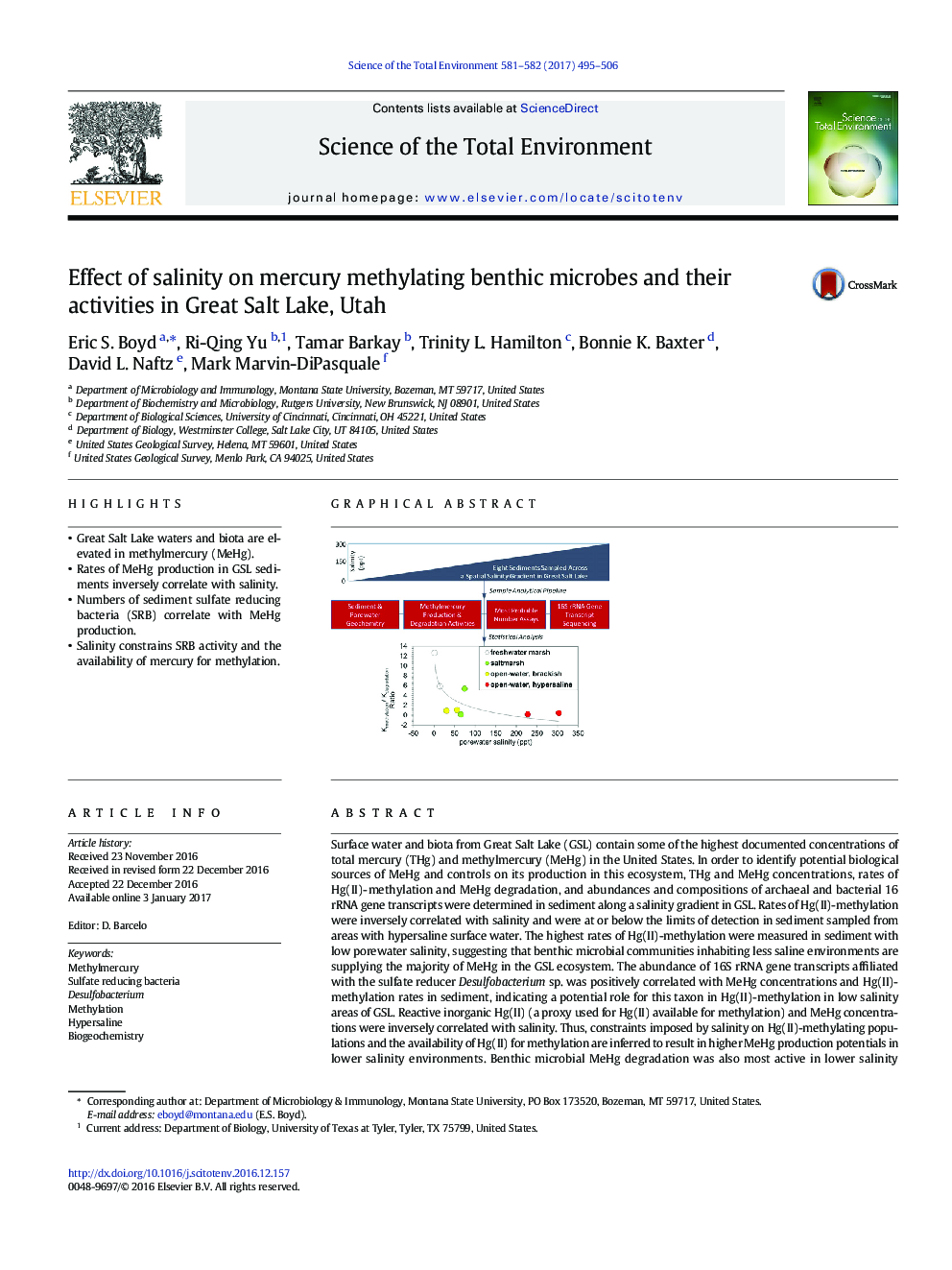| کد مقاله | کد نشریه | سال انتشار | مقاله انگلیسی | نسخه تمام متن |
|---|---|---|---|---|
| 5751794 | 1619710 | 2017 | 12 صفحه PDF | دانلود رایگان |
- Great Salt Lake waters and biota are elevated in methylmercury (MeHg).
- Rates of MeHg production in GSL sediments inversely correlate with salinity.
- Numbers of sediment sulfate reducing bacteria (SRB) correlate with MeHg production.
- Salinity constrains SRB activity and the availability of mercury for methylation.
Surface water and biota from Great Salt Lake (GSL) contain some of the highest documented concentrations of total mercury (THg) and methylmercury (MeHg) in the United States. In order to identify potential biological sources of MeHg and controls on its production in this ecosystem, THg and MeHg concentrations, rates of Hg(II)-methylation and MeHg degradation, and abundances and compositions of archaeal and bacterial 16 rRNA gene transcripts were determined in sediment along a salinity gradient in GSL. Rates of Hg(II)-methylation were inversely correlated with salinity and were at or below the limits of detection in sediment sampled from areas with hypersaline surface water. The highest rates of Hg(II)-methylation were measured in sediment with low porewater salinity, suggesting that benthic microbial communities inhabiting less saline environments are supplying the majority of MeHg in the GSL ecosystem. The abundance of 16S rRNA gene transcripts affiliated with the sulfate reducer Desulfobacterium sp. was positively correlated with MeHg concentrations and Hg(II)-methylation rates in sediment, indicating a potential role for this taxon in Hg(II)-methylation in low salinity areas of GSL. Reactive inorganic Hg(II) (a proxy used for Hg(II) available for methylation) and MeHg concentrations were inversely correlated with salinity. Thus, constraints imposed by salinity on Hg(II)-methylating populations and the availability of Hg(II) for methylation are inferred to result in higher MeHg production potentials in lower salinity environments. Benthic microbial MeHg degradation was also most active in lower salinity environments. Collectively, these results suggest an important role for sediment anoxia and microbial sulfate reducers in the production of MeHg in low salinity GSL sub-habitats and may indicate a role for salinity in constraining Hg(II)-methylation and MeHg degradation activities by influencing the availability of Hg(II) for methylation.
178
Journal: Science of The Total Environment - Volumes 581â582, 1 March 2017, Pages 495-506
